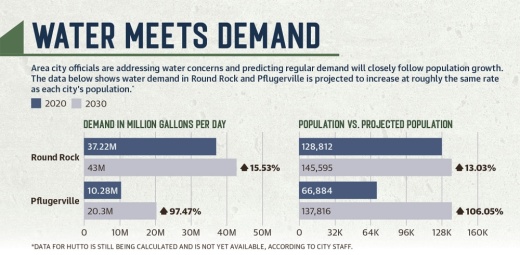The BRA is responsible for development, management and protection of the Brazos River Basin, and contracts with local municipalities—including Round Rock, Pflugerville and Hutto—for water supply. Brunett said the 2011 drought that left more than 80% of Texas’ land area in extreme drought at the height of the summer was severe.
“[2022 is] certainly a significant drought and for sure the worst that we’ve seen since 2011,” Brunett said.
Despite recent late August rains in the area that temporarily improved local dry conditions, state experts project a drought status will likely continue in Texas, though they cannot say for how long. Because of this and rising need in general, city officials maintain it is crucial to ensure local water resources can keep up with demand that is projected to more than double within the next decade.
To that end, major local projects are underway to expand water and wastewater treatment systems to meet demands of a growing population and address any issues of access in the case of severe drought.
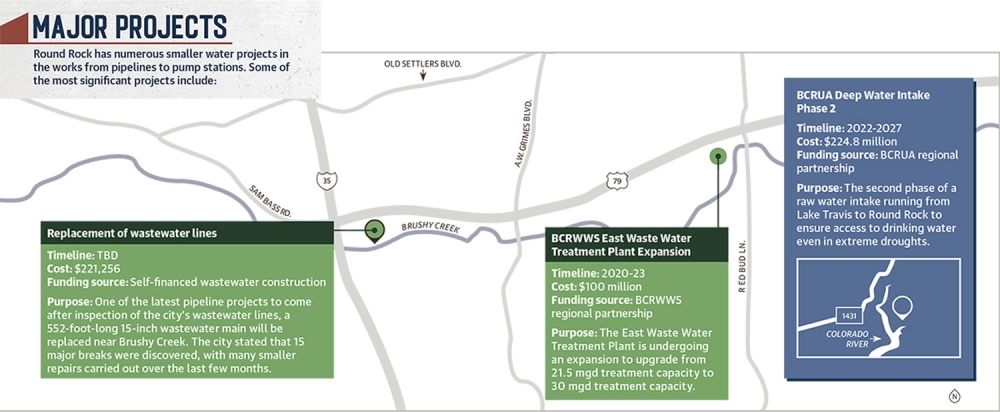
Further explaining the need for immediate preparation, Pflugerville Utilities Director Brandon Pritchett said ongoing drought conditions and population growth will make securing water difficult for area cities in the coming years.
“We, as a city, are in a very good position, ... but for Central Texas as a whole, I think that’s a whole different discussion,” Pritchett said.
Supply and demand
The source of water for local municipalities varies, but despite current demand and drought conditions, Michael Thane, Round Rock Utilities Department director, said the city is well-positioned with expansion efforts on the way.
Projections for expansions to draw 80 million gallons per day, or mgd, in 2030 show the city being able to meet peak demand of 43 mgd at full build-out.
Pritchett said Pflugerville is in a similar position. In June, the city approved a contract with the Lower Colorado River Authority to double the city’s yearly water to an available supply of 21.4 mgd to accommodate a demand of 10.7 mgd. The city would not use all of the available supply until at least 2040, but it would be there if needed, he said.
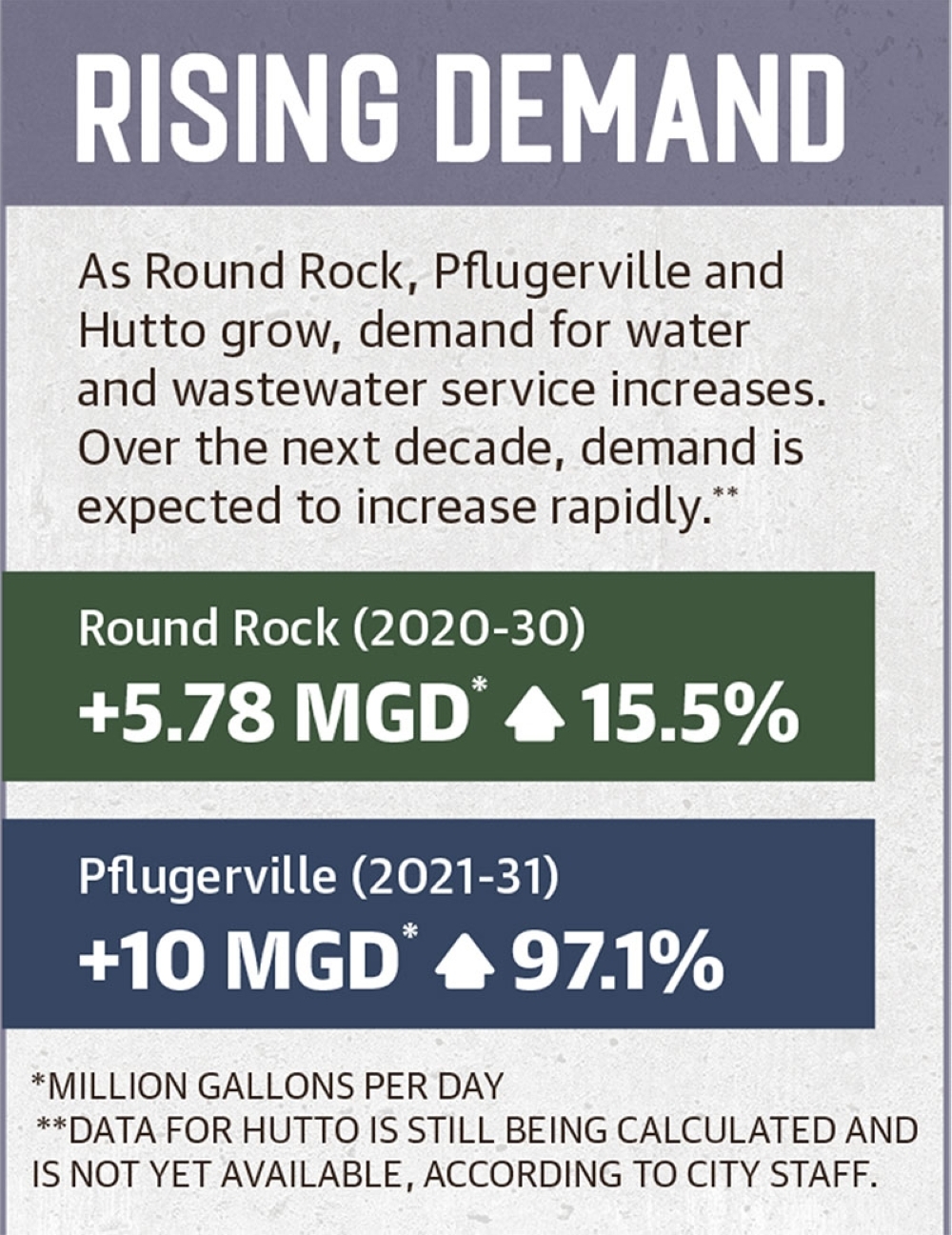
Pflugerville has an expansion to its water treatment plant in the works that will nearly double the plant’s capacity as well as several new pipeline projects, including a second pipeline to pump water from the Colorado River into Lake Pflugerville.
While Round Rock’s and Pflugerville’s recent water projects focus on water access in the long term, officials in Hutto are prioritizing capacity in the near term.
The city is in the midst of drafting an updated water and wastewater master plan to more precisely identify its needs, and staff said accurate data will not be available for several weeks. However, preliminary findings project the city’s water demand will catch up with its capacity within the next two years.
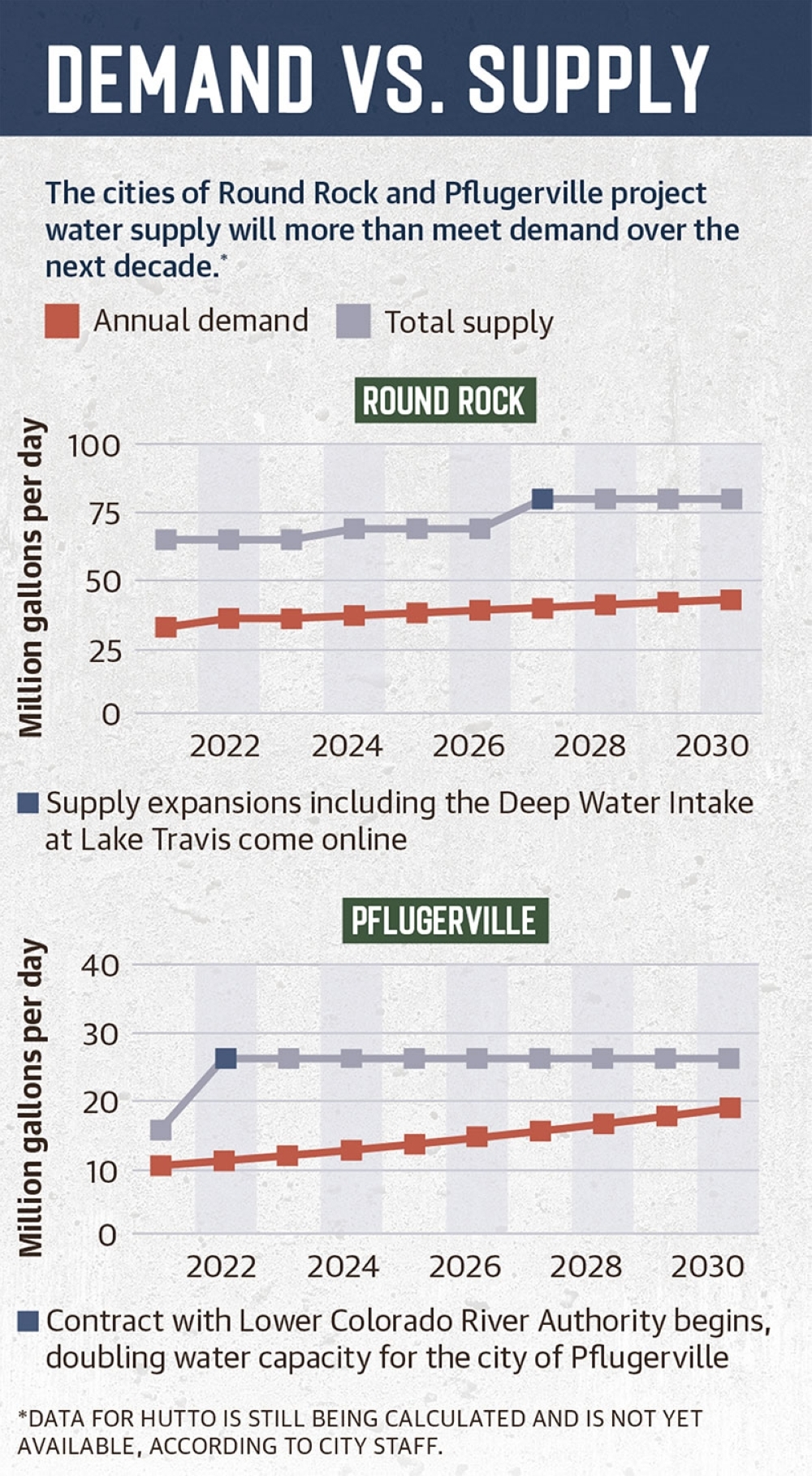
To address the looming shortfall, city staff identified several projects to immediately increase capacity, including improvements to multiple pump stations and construction of new pipelines.
“The plan here is to have an actionable [capital improvement program] list moving forward so that the council can act accordingly ... and direct staff to move forward on some of these projects,” Hutto Engineering Director Wade Benton said.
Thane said as the city of Round Rock has grown, officials have diversified water sources. In 2005 the city joined the Brushy Creek Regional Water Authority, a partnership with Cedar Park and Leander that allows for exploration of diversified water sources.
Pritchett said Pflugerville also uses conservation programs to stretch the water supply, including automatic metering infrastructure, or technology that allows users to closely track their water use.
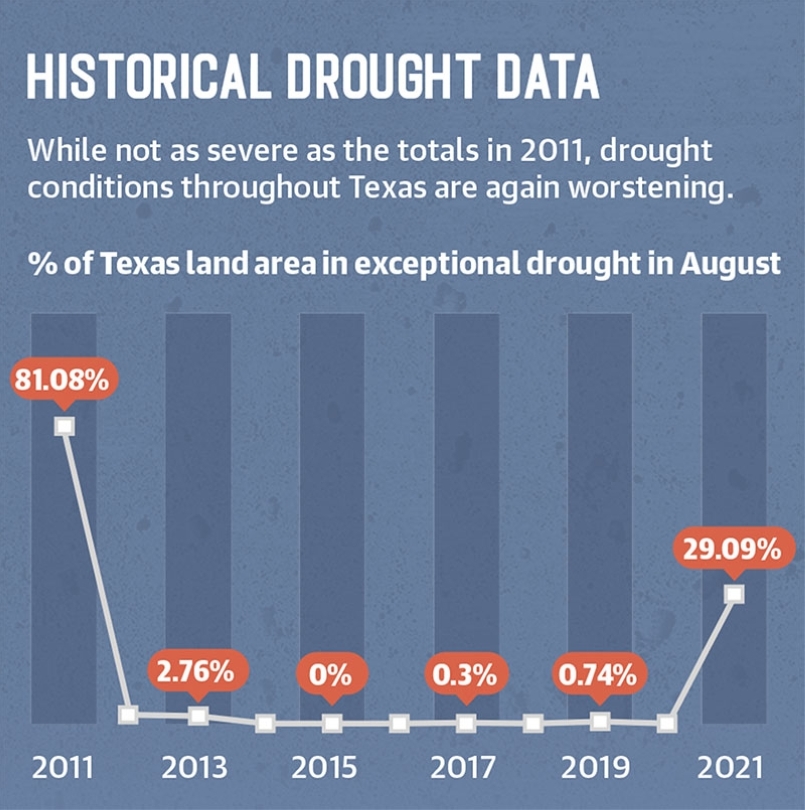
“[Automatic metering infrastructure] really pushes that conservation message and gets residents more knowledge about what they can do and how much water they’re actually using,” Pritchett said. Wastewater expansions
With regard to wastewater, the Brushy Creek Regional Wastewater System, which consists of two regional treatment plants located in Round Rock, is undergoing an expansion expected to be completed in 2023.
The BCRWWS is a separate regional partnership among Austin, Cedar Park, Leander and Round Rock to manage wastewater, similar in nature to the BCRUA.
The system’s East Regional Wastewater Treatment Plant is being upgraded to treat up to 30 mgd. Plans are being adapted to include more protective filters following incidents of hydraulic overload in March that resulted in several wastewater line breaks.
On Aug. 11, Round Rock City Council approved a contract with K. Friese & Associates to complete a master plan for the BCRWWS. Under the contract, K. Friese will collect data from the whole system and develop a long-range plan for treatment and collection systems.
Additionally, Pflugerville and Hutto each have their own wastewater projects in the works, from additional pipelines to wastewater treatment plant expansions.
Hutto’s wastewater outlook mirrors its outlook on water, meaning the city will require several projects in the near term to ensure its capacity to treat wastewater does not fall behind demand.
“I don’t hesitate to use the term, ‘immediately,’” said consultant Ian Toohey, who is assisting the city with the wastewater component of its master plan.
Diversifying sources
Thane said the expansions of both the water and wastewater systems will be able to support the projected build-out population of 250,000 in Round Rock. However, as the area’s population continues to grow, officials are turning their attention eastward, to the Carrizo-Wilcox Aquifer that extends across northwestern Louisiana, Texas and Mexico.
“We’re set for the next 30-40 years,” Thane said. “Round Rock’s thinking way further than that now.”
Pritchett confirmed Pflugerville is also involved in exploration of this project. Brunett said necessary infrastructure to bring CWA water west to Williamson County would likely take the form of a 50-mile pipeline.
Meanwhile, Hutto is making an effort to become more self-reliant in its water sourcing.
The city began work earlier this year on an aquifer storage and recovery well that will pull water from the Trinity Aquifer and store it for use when demand is high, such as during the summer or during periods of drought.
In the meantime, officials across all three cities encouraged water reuse and conservation of existing reservoirs.
“We’re going to have to do a better job at reusing our wastewater,” Brunett said. “We may potentially look at reallocating storage and existing reservoirs where we would basically change the normal level for more water storage, aquifer storage and recovery.”





